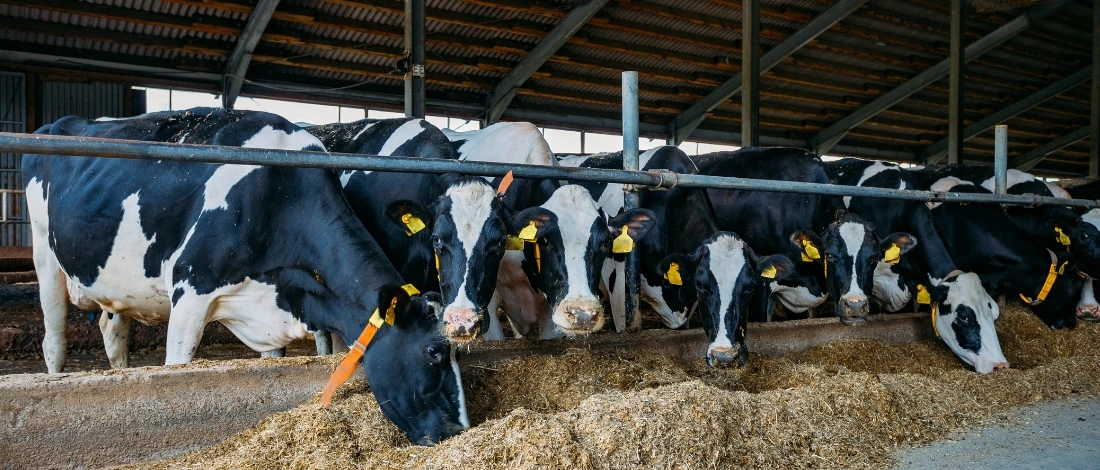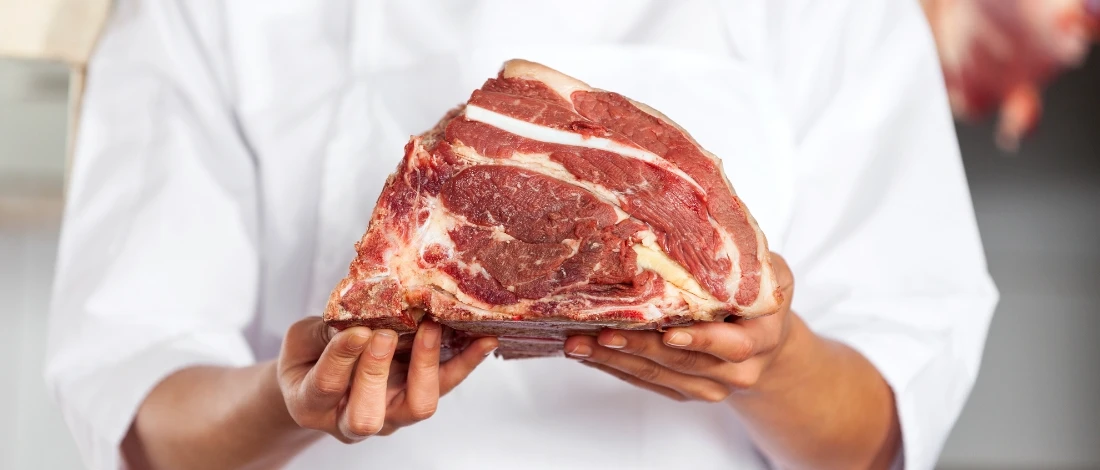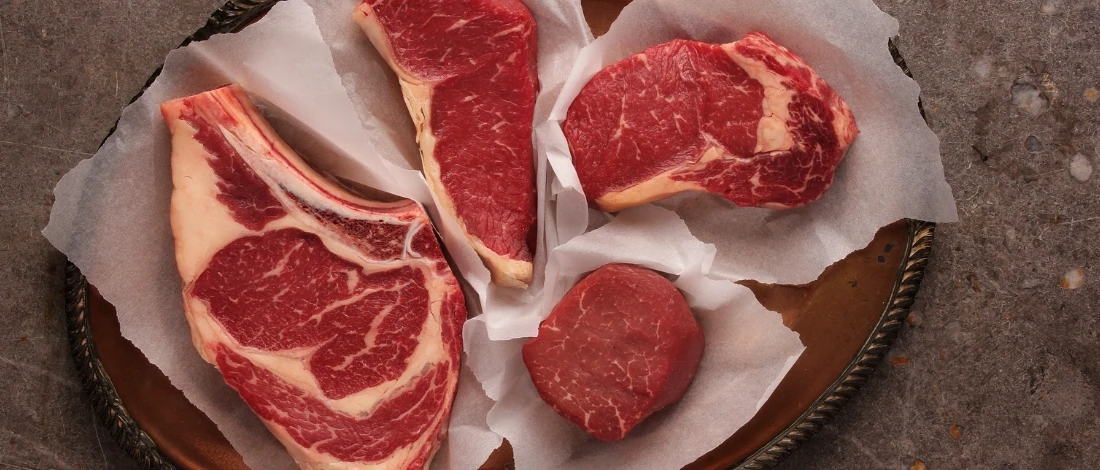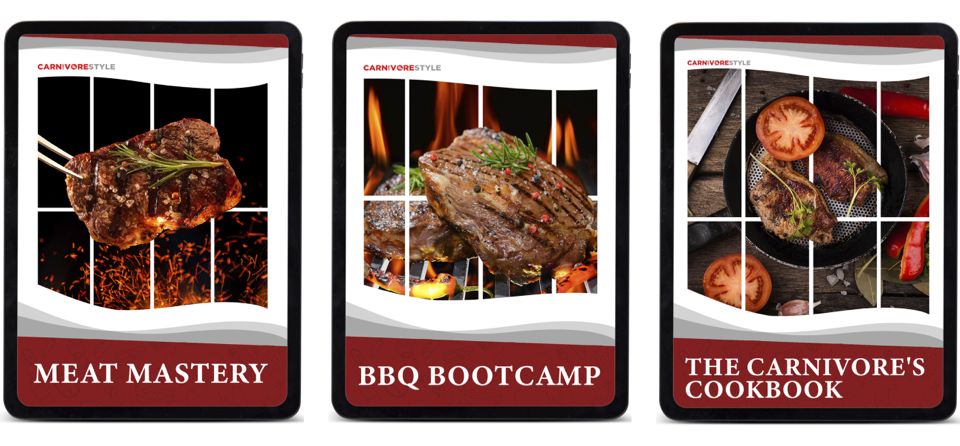One of the most pervasive questions in the carnivore population is the proper way to cut steak. The two most commonly used techniques are cutting with and against the grain.
But does the difference really matter?
As a long-time adherent to the carnivore lifestyle, I can tell you that the answer is unequivocal. Read on to see why cutting your steak across the grain is the way to go.
Quick Summary
- When you cut steak against the grain, it means you're slicing across those fibers, resulting in a more tender piece of meat.
- The grain of a steak is the direction of its muscle fibers.
- Aging, resting, and adding butter to a steak can also improve its tenderness.
What is the Grain?
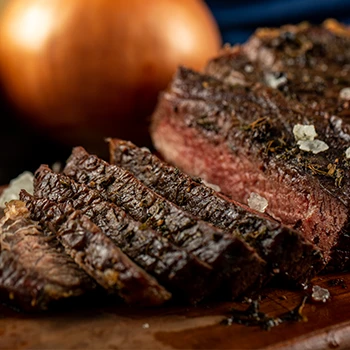
The "grain" in a piece of meat refers to the course of the muscle fibers. For a muscle to function correctly, the fibers must be aligned in the same direction. This allows the muscle to contract and relax in a coordinated way.
Thus, muscle fibers run parallel to each other. It starts during muscle formation and is most pronounced in cattle that lead more active lives before going to the butcher.
As you can tell by watching a bodybuilding competition, muscles that get used more frequently are generally larger. This is because they have fibers that have grown thick from regular use.
The same is true in a cow - the more highly exercised muscles will have thick and long muscle fibers. This tough muscle makes for a delicious steak but can also make it tough to chew.
Reasons to Cut Against the Grain

The reason it matters in which direction you cut steak has everything to do with those muscle fibers we just talked about.
If you cut with the grain, you are simply following the length of the fibers.
This means your teeth must work overtime to tear through the meat, resulting in serious chewing. You may end up with longer, thinner slices, but they'll be tough to eat.
"It's not just the cut of meat that determines how tender it is, it's also how you cut the meat."
- Regan Briggs, Executive Chef at The Windsor Hotel
On the other hand, if you cut with your knife against the grain of the meat, you're cutting across those muscle fibers.
Cutting meat against the grain means your teeth have a head start on the hard work of breaking down the muscles when eating. Slicing against the grain will produce fewer chewy bites of meat.
The Best Way to Cut Against the Grain

The good news is that slicing against the grain is relatively simple to do at the end of your cooking process.
- First, identify the direction of the grains. You can look at the meat and observe how the muscle fibers run. Finding the grain is easiest in tougher cuts of meat like skirt steak, flank steak, and hangar steak.
- Tender cuts like filet mignon, T-Bone, rib eye, and tenderloin have a less pronounced grain than tougher cuts like flank or skirt steaks. However, all meats do have a grain running through them.
- Begin cutting the meat perpendicular to the path that the fibers run. You want to use a very sharp knife and ensure that all of your cuts are going in the same direction. This will cut the meat across the grain.
- Cut meat into thin slices with your knife. Again, if you are trying to make the steak tender, you want to ensure that each slice is as thin as possible, even on a tougher cut. This will help to break down the muscle fiber further, so you have to chew with less power.
- Cutting thick slices leaves you with a significant amount of muscle to chew through.
- Cut steak on the bias. This final trick for a chewable slice of beef is to slice meat at a 45-degree angle to the cutting board. Do this instead of going straight down at 90 degrees.
Doing so will yield sliced meat with a larger surface area.
Related Articles:
FAQs
How Long Should You Rest a Steak?
You should rest a steak for a minimum of five minutes after cooking [1]. Eight minutes is ideal for most beef, though certain tender cuts may need more than ten minutes of rest. This will give the juices sufficient time to redistribute throughout the meat so they don't all end up on your cutting board.
Why Do Chefs Put Butter on Steak?
Chefs put butter on steak because the fat in the butter helps dissolve the meat's tough fibers and softens the char of grill marks on the surface. This leads to a softer steak. In addition, the buttery flavor adds additional richness to the taste of the meat.
How to Cut Raw Meat Against the Grain?
You cut raw meat against the grain by observing how the muscle fibers run. Once you see their path, you can then start slicing the meat perpendicularly to the direction of the grain. It's important to use a very sharp knife and ensure that all of your slices are going in the same direction.
How Do You Know Which Way the Grain Runs in Meat?
You know which way the grain runs in meat by looking at the direction in which the muscle fibers are aligned. To find the grain, look at the steak and observe the path of the muscle fibers. The parallel muscles form the grain of the meat.
Which Way Does the Grain Run on a Sirloin Steak?
One portion of the grain on a sirloin steak will run in one direction, but in another part, the grain will subtly shift. Gently pulling at the muscle fibers will help identify the grain's direction.
References:
- https://www.beefitswhatsfordinner.com/cooking/grilling-basics


